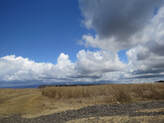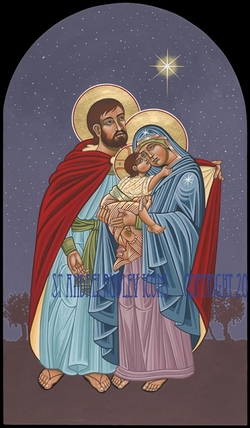 We do not get to pick our family of origin. Whether yours was a family in which you felt continually happy and safe or whether yours was one in which it was difficult to grow up, the household in which each of us grew was part of our formation into the person we are today. Regardless of which type we experienced, the idea of picking our family is not a reality of life. Though we can choose our friends, who may be nearer and dearer to us than our actual blood relatives, the truth is that we do not choose our origins. However, God our Father has chosen us to be part of His family and we do have a choice as to how we respond to that. One of the greatest blessings we have is this invitation since this particular family is the one Body of Christ. We are children of God which means all the baptized (and those preparing for it) are part of the same spiritual family which is one body with Christ as the head. This family is bound together in love through Jesus Christ, the birth of whom we celebrate during this Christmas season. This week we celebrate the Feast of the Holy Family. Many of the Scripture readings remind us that we are all one in this Baby who was brought into the world through a family. The ‘yes’ of Mary and Joseph is what made it possible. That God chose to send His only Son into our world by placing Him into a family should not surprise us. The Father could have sent Jesus in any manner which pleased Him, so it seems that families must please Him. In fact, if we go all the way back to the creation story in the Scriptures, the first thing we learn is that people were meant to be together. When making covenants with His people God repeated many times that they were to be fruitful and multiply. The story of Abraham, to whom God gave the charge to begin a nation, revolves around promises of descendants and of a long-awaited son, Isaac. It was his family that populated the Promised Land: the twelve tribes of Israel were the descendants of the twelve sons of Israel (who was originally named Jacob, son of Isaac, son of Abraham). It was to their descendants that the land was given. It was this people to whom God sent His own Son when the time was right. And God made sure that His Son would be born in the family line of a man beloved to Him, King David. 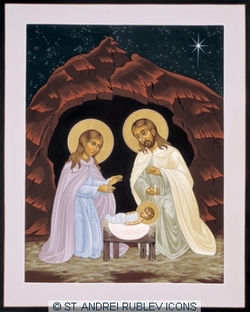 We may have wondered why Matthew began his birth narrative with a somewhat long genealogy. It is not merely a list of names. It is the symbolic list of the generations of men and women - (yes, there are five women in the list, four of whom are named and one who is ‘an honorable mention’)* - who were ancestors of Jesus. This list gives us a sense that God had a plan. God did not send Jesus into the world willy-nilly. Rather He had a time and place that only He knew until the time came. The other writer of a birth narrative, Luke, placed the genealogy of Jesus a bit later, right before Jesus was baptized. He placed it after the birth stories because he wanted us to know that Jesus had an important mission to fulfill. His version of the genealogy links Jesus back to Adam as if to say that we are indeed one family. Just as Adam’s sin caused us to need a redeemer, Jesus overcame sin by giving His life for us. He healed the rift between us so that we could be reunited in the waters of baptism. Jesus strengthened us as the family of God. In the letters of the New Testament, especially St. Paul and St. John, we see the term ‘brothers and sisters’ often, revealing to us that the early Christian community thought of themselves as a family. They simply followed what Jesus taught and what the Holy Spirit revealed: they were a community of believers, yes, but they were also brothers and sisters. This is why St. Paul said there are no divisions. In this family there is not Gentile or Jew, male or female, slave or free. There is one Body without divisions, just as a family should have no divisions. We are one with a common identity in Jesus Christ our Lord. Many of the great saints also had an appreciation of family. For example, St. Thérèse of Lisieux had such a great love for her birth family that she could hardly bear to be separated from any one of them. She followed two of her older sisters into the same Carmelite convent. It is clear she had a vocation, but I think she also loved her sisters so much that it gave her great comfort to be near them during the duration of her short life. Leaving her father almost crushed them both, but Thérèse came to offer up the pain of that separation as part of her ministry. It gives us the understanding that God does not intend to separate us completely from our loved ones. Rather He intends for us to remain connected and be part of each other’s lives in one way or another. For some it will be a connection during this earthly life and for others, (especially as we get older) it will be through the bond of baptism with which we remain joined to those who have gone before us in death. 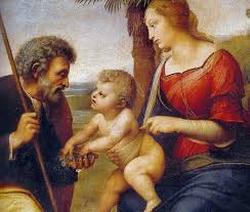 The Holy Family of Joseph, Mary, and Jesus should be our role model for family life. Lest we somehow believe their lives were unlike our own, they, too, had their struggles. Remember, relatively soon after the shepherds and magi left them, they had to flee, living as aliens in a strange land for a few years in Egypt. They were of a lower class economically and were relatively poor, Joseph being a carpenter. There is no evidence of any wealth after they returned to Nazareth; they must have lived on the gold, frankincense, and myrrh they received from the magi while being on the run from Herod. They lived humbly and worked hard. But Joseph and Mary modeled family life to their son, Jesus, and taught Him everything He knew about being a man as He grew in obedience and wisdom in their household. There is no doubt that they taught Jesus through their example. Jesus had sensitivity towards the sick, the outcasts, the poor, and the marginalized. He was alert to injustice and worked against it. He taught His followers about being strong in our weakness, how to live with mercy and in peace, and how to respond in a loving, non-violent way. Surely He learned a lot about this from His parents, though He was God and also learned from His Father in Heaven. But Jesus desired for His human family to be whole, therefore He came to heal that which divides and that which wounds. All of these were values that came from His humble family. His sinless mother, Mary, must have taught Jesus through her reflection and prayer and Joseph must have been an example of quiet strength, teaching Jesus how to live with humility when there would have been a lot of temptation to be known as a person of importance. 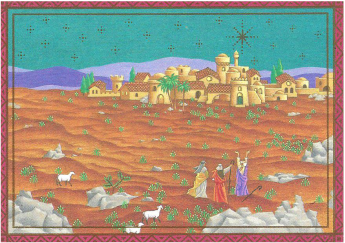 Let us learn from the lessons of the Holy Family. They did not make a show of who they were. When the shepherds and magi came to worship Jesus they did not let it ‘go to their heads’ knowing they were the parents of God’s own Son. They did not fight the authorities. Rather they accepted their poverty and learned from it. They teach us that we must reach out to those around us with respect and humility. They teach us that we are one family in Christ and that it is up to us to reach out to the poor, the lonely, the hurting and the lost. We are the ones who have to work for peace by bringing love wherever we may be. We are the ones who need to recognize that we are part of the Holy Family, not onlookers off-stage who merely gaze on the Nativity scene. No, they draw us in, not only to be active participants, but as their brothers and sisters. Let us embrace our true family of origin which is the Holy Family of Mary, Joseph, and Jesus. Let us find our identity as one with them. May we be grateful for our membership in the family of Jesus! May we recognize that we are all brothers and sisters, even with those who seem so very different than ourselves! May we be filled with compassion and mercy for those with whom it is difficult to relate! May we realize that as members of the Holy Family we must respond by actively reaching out to our brothers and sisters! And may we have gratitude for the love of the Holy Family which is extended to us! Let us meet and adore at the foot of the manger alongside shepherds and kings, Mary and Joseph! Peace! ©Michele L. Catanese *The four women named in the genealogy of Matthew are Tamar, Rahab, Ruth, and Mary, with special emphasis on Mary as mother of the Messiah. The 'honorable mention' is the wife of David and mother of Solomon: Bathsheba. She is described, but not named outright. (Matthew 1:6) The two icons at the top are the work of Fr. William Hart McNichols. The first is The Holy Family for Holy Family Hospital of Bethlehem. It is one of the most lovely icons of the Holy Family I have ever seen. The version I used here is the unframed version, though the framed original is also very beautiful. The original is in Bethlehem, Israel as the title indicates. The unframed version is found at http://www.standreirublevicons.com/gallery-views/jesus-gallery/product/343-the-holy-family-for-holy-family-hospital-of-bethlehem The framed version is at http://www.standreirublevicons.com/gallery-views/jesus-gallery/product/345-the-holy-family-for-holy-family-hospital-of-bethlehem-with-frame. You can obtain copies of these here or also at http://fineartamerica.com/featured/2-the-holy-family-for-the-holy-family-hospital-of-bethlehem-william-hart-mcnichols.html The next illustration is called The Holy Family with a Palm Tree (1506) by the great artist Raphael. You can find this at https://www.flickr.com/photos/mbell1975/6341430767/ The last picture is from a long lost Christmas card from many years ago. I keep it in my Bible and have no idea from whence it came. 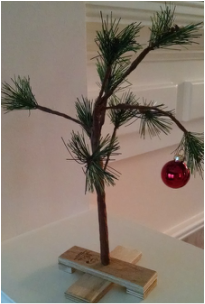 Charlie Brown had it right. While everyone else (including his dog) was into the glitz and glamor of lights, presents, and scurrying around, he picked that one lonely Christmas tree as the one he would love. And even though he thought he had killed it when he put that one red Christmas ornament on the tree, he still had the right idea. Charlie Brown recognized that this season is about simplicity. After hearing Linus, (who also seemed to understand), recite the birth narrative in Luke’s gospel, Charlie Brown realized that his instincts were correct. He simply wanted that which mattered most to him which was his family, friends, and the simplicity of a baby being born in a lowly manger who would change everything. He picked the lowliest Christmas tree because he understood that the season really is about love. And it really is quite simple. The fourth week of Advent can be the most difficult to reflect upon. This is the time when things may be the busiest and most harried with last minute details that need attending. It is also the time when we have been reflecting on so many Advent images (if we have been able at all) that we are tempted to throw our hands up and shout, "Just bring on Christmas already! Let's get to the point!" But are we really ready, or are we simply raising the white flag amidst our weariness given the lateness of the season? In a perfect world we would truly be spiritually ready for the feast of the Nativity of the Lord. But if the world was perfect we would not need Jesus to come, would we? And this is precisely why it is the most important time of the entire season: we do need Jesus. We need Him badly. And maybe we are ready, though our reasons are not the purest. But then again, we are ready. Therefore these last few days in this shortest of the Advent weeks are really the most poignant of them all. We need Jesus to come into our hearts in a new way to heal that which is most wounded, to revitalize that which is weariest, to bring light to that which is darkest, and to bring joy to that which is dimmest. 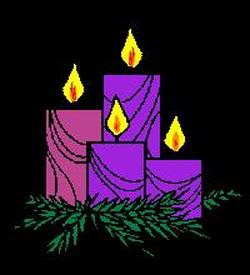 The key to this part of the season is, paradoxically, simplicity. We have visited every one of the themes by now, from the Annunciation to John the Baptizer to the trip to Bethlehem. There is not much left to say. Therefore, we are invited into the silence of the last few days before the birth of Jesus is celebrated. It is, indeed, very simple. In our daily lives we can rush around getting work done; we can fret over the shopping and decorating, and we can obsess over all the mechanics of that oh, so important meal on Christmas day. But the truth of it is that none of that really matters in the long run. What matters is finding Jesus in the midst of everything we are doing. And even more important, it is about finding Him in the midst of the people we are sharing it with. Therefore in meditating during these last few days, we are called into the simplicity of it all. Despite all the theological, liturgical fussing within our hearts and minds, and despite what we know to be beyond our understanding as to how the King of Creation comes as a tiny baby, it is all really quite simple. It is about love, pure and transparent. To make it about anything else is to miss the point entirely. For example, in the reading from 2 Samuel 7 in the 4th Advent Sunday liturgy we hear that King David wanted to build a house (temple) for the Lord. Through the prophet Nathan we receive God’s response along with the king: God does not want a building, but rather He wants something greater from David. He wants David to receive a gift, but it is one that will need attention and nurturing. What God is giving is not just for David. It is for all of us. The gift is that the Messiah will come and that He will be a descendent of David. 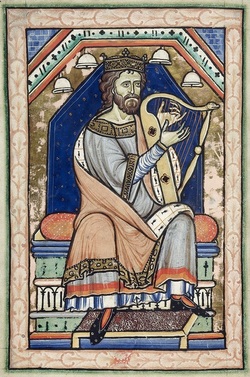 David was well intentioned, but he had missed the point until God clarified it. What God wants of any of us is that we receive His Son. He does not want us to build glamorous temples, put on elaborate shows of piety, or give to be seen giving. Rather He desires that we receive a humble baby who comes in an old stable to some poor, but faith-filled parents. He wants us to come in our nothingness, bringing only one gift, which is the gift of ourselves. He only wants to make a covenant with us and that covenant is all about love. He wants to love us and for us to love Him back. It is indeed very simple. Charlie Brown had it right: it is about a nearly bare Christmas tree with one red ornament. Or to translate to the truth of the season: it is about a nearly bare stable with the attention being put on the Lord, not on the condition of the surroundings. That red Christmas ornament put a strain on the tree until it was shored up with Linus’ blanket, (for those who do not remember the scene.) In the real Nativity scene, the baby will be supported by the love of Mary and Joseph, and soon afterward the shepherds, kings…and you and me. We need to ready our hearts for the baby to come into that manger. He will eventually ask a lot of us. He will ask us to love the way He loves. But He will also give us what we need to do so. In these last days of Advent we need to reflect upon what that means. How can we prepare for such a love? How can we prepare to make a response to such a love? In what way have we made it so complex that we are missing the point God is trying to make? And how can we let Him strip away the distractions so that we can truly be ready to receive? 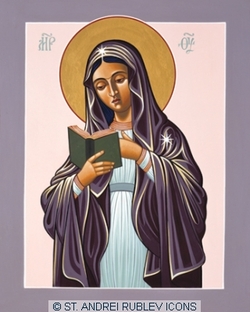 Yes, Charlie Brown had it right. It is about the simplicity of love. It is not about dressing it up in fancy words and fancy clothing and pretending it is something other than it is. It is about taking that which is loneliest, most fragile, most wounded, most reviled, and most broken and sharing just a bit of our love. I think that is something we can all do. It is what the season is really all about. So let us wait these last few days with joyful expectation. Let us bring our weariness to the stable along with the very pregnant mother Mary, who bore Him in her womb with love beyond all telling. Let us wait along with Joseph, the foster-parent-to-be who tenderly cared for his wife, preparing the stable for the birth which was to come at any moment. Let us drink in their love, which was infused with the Child to come, and let us recognize the naked simplicity of the moment. Let us be there without pretense, without worry whether we are worthy enough (no one is!) and without fear. Let us just be there, side by side, with the love that will change everything. 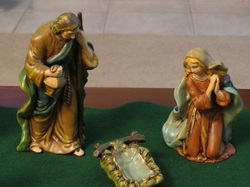 May we come to Bethlehem with Mary and Joseph, awaiting the arrival of the child Jesus in joyful expectation! May we be able to put aside all fear and worry, knowing that all He wants of us is us! May we be able to put aside all that distracts us from these late Advent mysteries, focusing on that which really matters and that which we are really called to do! May we hear the richness of the silence which speaks of the simplicity with which love comes! And may we be assured that Jesus comes for us to be our true Emmanuel, ‘God with us.’ Let us meet in simplicity at the foot of the manger in the heart of the one who loves us beyond all telling! Marana tha! Peace! (And when the day does arrive, have a wonderful, blessed Christmas!) ©Michele L. Catanese The photos are mine. Yes, I do have a 'Charlie Brown Christmas tree.' Thanks to Charles M. Schulz for creating such a treasure of wisdom as he gave us in the Peanuts strip for so long. The painting of King David is the Westminster Psalter David. You can find it at http://commons.wikimedia.org/wiki/File:Westminster_Psalter_David.jpg The icon is one of the many icons written by Fr. William Hart McNichols. It is called Mother of the Incarnate Word. I love it for meditation during Advent because it is clear that Mary is pregnant. If you are interested in obtaining a copy it can be found at http://fineartamerica.com/featured/mother-of-the-incarnate-word-william-hart-mcnichols.html 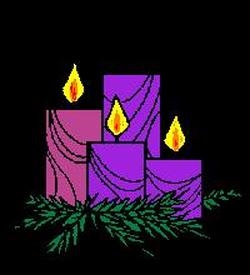 Recently I had an appointment with my doctor for what I call ‘routine maintenance.’ I got there a few minutes early, fully expecting to wait a while. I had barely sat down in the waiting area when a nurse called me in to check my vitals. Then she took me to an examination room to wait for the doctor. Once again I figured it would be a long while, but within three minutes the doctor walked in for my visit. I was (happily) stunned. No offense to physicians, but most of my medical appointment experience has involved waiting for long periods of time. In fairness, these men and women are very busy, usually over-scheduled beyond their control. I also know there are other times and places in which we have to wait when we feel it is just too darn long, and maybe rightly so. But ours are lives filled with waiting, and often we get a bit impatient when we think things are not moving as they ought. Honestly, we are irked because we feel like we can do nothing about it. Every year we either hear the phrase “Advent waiting” or we are reminded that in Advent we await the coming of Jesus during these four weeks. It is true, we are waiting. We think of waiting as being about passivity, but paradoxically it plays out as quite the opposite: we are in such a hurry to get all the details managed in preparation for Christmas that we are going at break-neck speeds. There is nothing passive about that at all, yet all the imagery we use in this season is about calmness and stillness. We sing hymns about silent nights and starry skies, open hearts waiting to be filled with the wonderful coming of the baby Jesus in a bucolic manger scene: nary a sound but the lowing, (whatever that is), of a cow.  However it was for Jesus, this is certainly not the world we live in today. Our world is very fast-paced; like it or not, it is the way we live. We have so-called conveniences which get tasks accomplished faster and supposedly free us up…to do more things. The result is that most of us are really not that good at waiting because we have gotten very used to doing so much in so little time. Much is expected of us, too. We have families and friends for whom we want to do nice things. We have jobs to keep up with and social events that need attending. Every year many of us intend to be quieter and spend more time savoring Advent, but somehow we never really get there by the time Christmas does arrive, so we say “there’s always next year” only to find out that our intention is not realized next year either. 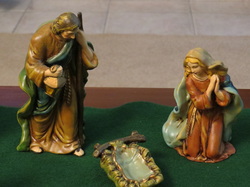 There is something we can do about it. We can look at that for which we are waiting and weigh it alongside the quality of our waiting. We are waiting for Jesus to return, yes, and we are waiting to celebrate the day on which He entered into our world. We celebrate this with liturgical events and with Christmas parties, dinners, gift giving and the like. But the locus of our waiting is Jesus Christ, not all the activity. We wait upon God who comes into our world as a human with a mission and a message. There is more than a stable scene: it calls for us to be awed by the amazing miracle of God coming from Heaven to be one with us. If we really spent time thinking that through, we would never get off our knees! The Father sent the Son so that we might come to know Him better, so that we might have access to Heaven, so that we might know better what love, compassion, mercy, and joy really are, and so that we might know how much He loves us. Why would he bend low to come to earth which is populated with people who are so sinful and broken? How could the perfect God who is glorious beyond anything we can imagine, become limited to an imperfect human body? It is incredibly moving to think of how He could be born to a human mother into a human family. This is the God of All the Universe, the God of Creation, who we are talking about. This is the only one true God, who is mighty beyond comprehension: the Holy One of Israel, the God of Hosts, the God of Abraham, Isaac, and Jacob, Joseph, Moses, David, and all the prophets. All that glory inside of a human baby who will grow so that we might know love as it truly is. As I said, if we really contemplated this, we would never leave our knees. But we do need to live our lives, so we have to take this mystery and this reality with us into the world. 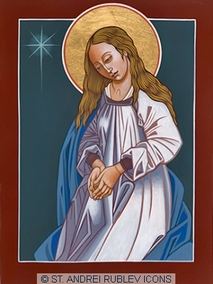 This is what this third week of Advent is saying to us. We take the mystery into the world in which we live. Therefore we celebrate it differently than we do the first two weeks. We will light a rose colored Advent candle this week and the priest and deacon often wear rose colored vestments. This joyfully announces that our wait is almost over. But it also reminds us that if we have not already done so we should ‘stop and smell the roses,’ to savor that which we have left in our preparation. Time is short, but it is time pregnant with messages. (The puns are intended, but there is meaning in them.) Each day we have messages from God in the Scriptures about the joy of His coming. From Isaiah 61 telling us of the rejoicing with which He comes to heal that which is broken and release those who are captive, to how important it is to truly listen to what the prophets are saying, to our need to change our ways and affect the ways of the world: all of it is rising in intensity. The message is urgent. This week we also begin the process of “counting down” to the glorious celebration of His birth with what are called the “O antiphons” which are sung or said before the reading of the weekday gospels. It begins on December 17 and finishes on December 24: “O Wisdom of our God Most High; O Leader of the House of Israel; O Root of Jesse’s stem, O sign of love for all His people; O Key of David; O King of all nations and keystone of the Church; O Radiant Dawn, splendor of eternal light, sun of justice.” I suggest that we take the antiphon for each day and pray with it. It would be a great way to let the messages penetrate our hearts during our time of waiting. Another suggestion is to allow the preface prayers of the Mass to be part of our prayer, too. If we listen to how the Church prays, we certainly will get the message that Jesus wants for us to receive. (For where to find these, see below.)* It is the quality of our waiting that needs to change if we are to really live Advent. You see, our waiting is not about passivity at all. It is about giving ourselves time to let the message become active in our hearts, minds, and souls. Waiting is about working to carve a space for the Word to dwell and to start doing that now. The season allows us to let that space grow in us so that when Christmas comes we already know something about what it means for us and our world, and for us to take action. 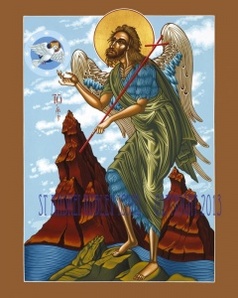 We are in training, so to speak, during Advent. We are preparing to hear the message that comes in that stable in Bethlehem. The Eternal Word of God is who is coming and His message comes to those who receive it. If we have prepared, what we have really done is to have learned how to work with the distractions in order to hear Him. What praying on the mysteries of the antiphons and prayers of the liturgies does for us is to enhance the quality of our waiting, and to help us to work with the activities in order to find Him there. It helps our hearts to stretch so that we reach out to the poor outcasts, just as Jesus came as a poor outcast, homeless and without material possession. It helps us to recognize Him in the incarcerated, marginalized, ill, lowly, and alienated. We do not have to wait for Him to come in order to know what it is that we are to do. The third week of Advent reminds us that in the waiting comes the joy of serving Him who comes to serve us. May we receive the message of this third week of Advent! May we open our hearts to true Advent waiting! May we learn to work with the distractions of this time of preparation, finding the message in the midst of it! May the joys and challenges of this time help us to remember for whom it is that we wait! And may we fall to our knees as we wait before the mystery of the King of Glory who comes, especially as we encounter Him in one another! Let us meet, on our knees, in the Heart of Jesus! Marana tha! Peace! ©Michele L. Catanese *This is the Preface Prayer for Advent I: http://www.catholicdoors.com/prayers/english5/p03361.htm Here is the Preface Prayer for Advent II: http://www.catholicdoors.com/prayers/english5/p03362.htm You can find the daily and Sunday readings at http://www.usccb.org/bible/readings/121414.cfm (This link is for the third Sunday in Advent, but on top of the page you can change the date to the current one.) The icons are the work of Fr. William Hart McNichols. The first is called Mother of God Waiting. If you are interested in purchasing a copy of this it can be found at http://www.standreirublevicons.com/gallery-views/mother-of-god-gallery/product/154-mother-of-god-waiting-in-adoration The second icon is St. John the Forerunner (The Baptist). It can be found at http://www.standreirublevicons.com/gallery-views/holy-men-icons/product/137-st-john-the-forerunner-the-baptist  I have always had a great love for the Book of Isaiah, found in the Old Testament. I love that in Advent we get a huge dose of his prophecies pertaining to the coming of the Messiah. I am surely biased because all the prophets write beautiful imagery in their messianic prophecies, but I find the writing of Isaiah particularly stunning. I think that is part of why I look so forward to Advent, (besides longing for the coming of Jesus.) I always wait for the gorgeous images with which he blesses us that describe the glory of the Lord and the safety and love which He offers to us. Oh yes, the book of Isaiah has some pretty raw, biting prophecies, but he was a prophet, and that was his role: to wake the people from their slumber and arouse their love for God once again. The point for him was to save them, not to doom them. As with any prophet, the words were God’s and the prophet was the mouthpiece. (The Hebrew word used for prophet is ‘nabi’, and its translation is ‘God’s mouthpiece’.) Isaiah wrote what God inspired him to write. But how he wrote it, the images he used, and the sheer poetry of it, were the gifts Isaiah brought to the table. Though we know little about Isaiah, the man, I believe that he was rather humble. Unlike the other major prophets who tell us about how they came to be chosen by God as prophets in the first chapter of their books, Isaiah waited to the 6th chapter of his book to tell us about the vision he had. The only introduction he gave at the beginning of his book is that he, the son of Amoz, “had a vision concerning Judah and Jerusalem in the days of Uzziah, Jotham, Ahaz, and Hezekiah, kings of Judah.” (Isaiah 1:1) He mentions so many kings that we almost forget him. Then with no further ado he launches into quite a blast of accusations and warnings. 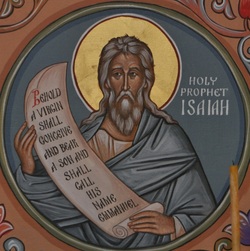 However, it is what happens in chapter 6 that makes us really understand the man. Isaiah was praying in the Temple when he had a dazzling vision of God, the Holy One of Israel, sitting on His throne surrounded by seraphim, the fiercest of angels (enough to make one faint) crying, “Holy, holy, holy, is the Lord of hosts! All the earth is filled with his glory!” Isaiah, trying to grasp what he was seeing, cried out, “Woe is me, I am doomed. For I am a man of unclean lips....” Isaiah realized that he was a sinner, not worthy to see such a vision. But God sent one of the angels to purify and empower Isaiah, and so the angel touched his lips with a burning coal. (Remember, this is a vision and is symbolic. God did not burn the man’s lips!) Then God asked who might go forward as His prophet, to which Isaiah responded with a wholehearted and zealous, “Send me!” With this in mind, one of my favorite images from the readings in Advent is of God’s holy mountain. Isaiah tells us many times about God’s holy mountain to which we are all being drawn. The word ‘mountain’ appears 22 times, in 21 verses;* of these, all but two (Is. 18:6 and Is. 31:4) are about coming to a place of joy, peace, and security. The Mass for the second Sunday in Advent has one of the notable passages about God’s holy mountain: “Go up onto a high mountain, Zion, herald of glad tidings; cry out at the top of your voice, Jerusalem, herald of good news!” The good news being shouted from the mountain is that the messiah will be like a shepherd who feeds His flock, caring for them with great tenderness. (Is. 40) A few days before this we hear that He will call us to His mountain and “provides for all peoples rich food and choice wines, destroying the veil that veils all peoples,” (Is. 25:6-7); and that we will find joy in the Lord because “the tyrant will be no more and the arrogant will have gone.” (Is. 29:20) Simply put, Isaiah is not just telling us about the Messiah, but he is revealing to us why God is sending Him. Isaiah knew that the people of his time were far from the Lord and that they were following false gods, had immoral practices, bad leadership, and arrogant attitudes. (Sound familiar?) He knew that God was trying to save His people through the messages being sent. And the message was essentially this: “Repent. Change your ways now, before it is too late. Return to God who loves you. But if not, you will lose all you hold dear, not because God wills it, but because you are pushing Him away.”  The image Isaiah provides us of what God’s holy mountain is like is best described in chapter 25, but the purpose of the mountain is best seen in chapter 2. He says: “In the days to come, the mountain of the Lord’s house shall be established as the highest mountain and raised above the hills. All nations shall stream toward it. Many peoples shall come and say: ‘Come, let us go up to the Lord’s mountain, to the house of the God of Jacob, that he may instruct us in his ways and we may walk in his paths…. He shall judge between the nations, and set terms for many peoples. They shall beat their swords into plowshares and their spears into pruning hooks; one nation shall not raise the sword against another, nor shall they train for war again.” This passage is so important that another prophet repeats it almost verbatim. (Micah 4:1-3) God wants us to know that this is His dream for His people: He wants us to have peace and security. But mostly, He wants us to desire it freely. He wants us to have open hearts and minds to His ways, to desire His law which comes forth from a wisdom we do not possess, but that is His alone. He wants us to trust in His ways, knowing that it comes from the love which He bears for us. He wants us to love one another because He does. And He wants us to receive His love because it is who He is. That is God’s dream for us. Because of this dream God has for us, He knows we need help. We cannot achieve this on our own. Therefore interspersed with this imagery revealed by Isaiah, He tells us of the messiah who will embody this same message and bring His love, because this one will be His Son, born in Bethlehem according to prophecy, and given the name Jesus. He is God-Hero, Wonder-Counselor, Father-Forever, Prince of Peace. 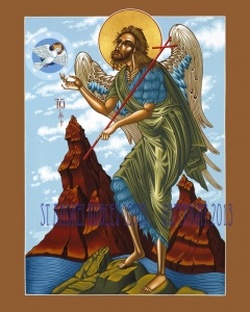 So what does all this mean for us? We know He has already come, but if we are honest we also know that we are no different than the people of Isaiah’s day. The sad reality is that we have not yet fully welcomed the Son of God into our world. As a people we still have morality problems, problems with leadership and those who should set good example for us, problems with poverty, disease, war, brutality, greed, arrogance, injustice, selfishness, and alienation. We still want to be comfortable without responsibility, enjoying the fruit of our labor as if it was for us alone. We forget that all is a gift from God and that our time, talents, and treasures are meant to be shared. We were created by God as a community, not as individuals who only take care of their own needs. Is it no wonder John the Baptizer is presented in Advent as coming before Jesus so that we hear the message of shaking up the status quo? Therefore every year we remember the glory of the coming of Jesus so that we might once again try to spread that message. Yes, Jesus is coming. He is coming again in at the end of the world and we still have a tremendous amount of work to do in preparation. Isaiah reminds us that Jesus comes with peace and mercy in His heart, but also with justice in His right hand, so to speak. He is inviting the faithful to God’s holy mountain, and God wants us to bring others with us. To do so, we have to learn to love them as He does. Otherwise they will not want to come with us. Isaiah got the message right: God’s holy mountain is a place of peace and love, a place of abundance and joy. We need to prepare to be at that mountain not only for ourselves, but with our brothers and sisters. And where is that mountain located? In a tiny manger outside of a little, almost unimportant town called Bethlehem. Let us prepare the way! May we see the beauty of the mountain of the Lord as described by Isaiah as our true home! May we be inspired to bring others to the holy mountain with us! May we have the courage to work with our neighbors against injustice and the ills of being godless! May we find the consolation and joy in the message of the coming of the Messiah, our Prince of Peace! May we be filled with gratitude at all we have been given, and may that move us to share what we have! And may we be filled with the love of the Lord who empowers us to go and do the same! Let us meet in the Heart of Jesus! Marana tha! Peace! ©Michele L. Catanese * The information about the references to God's holy mountain can be found at http://www.catholiccrossreference.com/bible/nab-search.cgi?books=isaiah&query=mountain&mode=whole The top photo is mine. It is actually a mountain in Colorado. The first icon of Isaiah can be found at http://www.royaldoors.net/2013/06/isaiah-the-fifth-gospel/ The painting is called The Peaceable Kingdom. It is the work of John August Swanson. The final icon is called St. John the Baptist (The Forerunner) and it is the work of Fr. William Hart McNichols. It can be found at http://fineartamerica.com/featured/st-john-the-forerunner-also-the-baptist-william-hart-mcnichols.html |
Heart Speaks to Heart
|

 RSS Feed
RSS Feed
